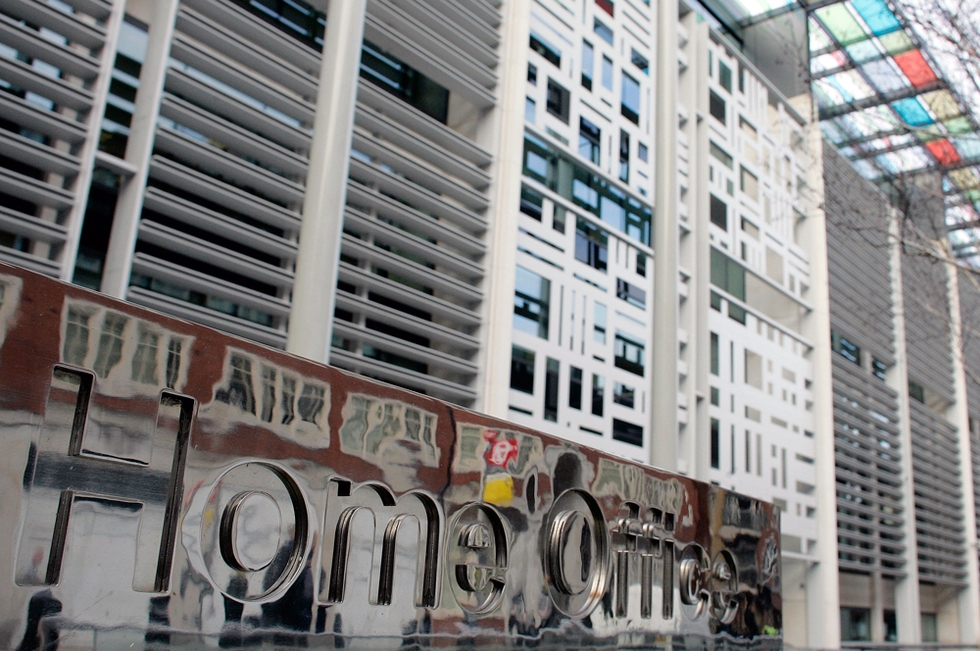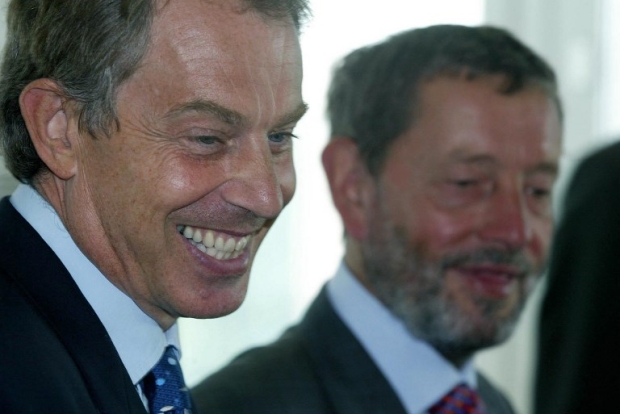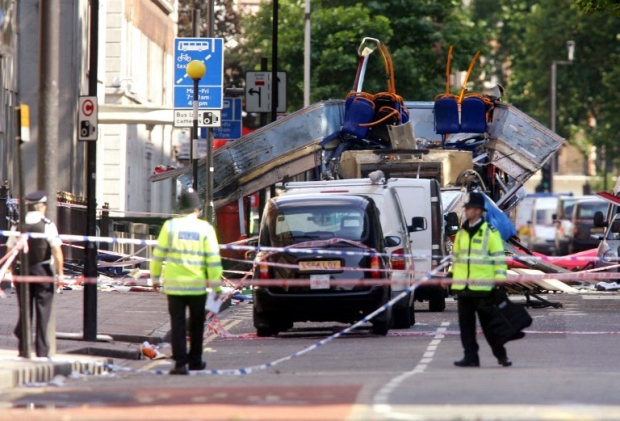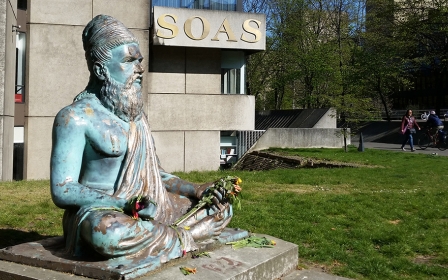REVEALED: How government feud shaped UK's counter-extremism strategy

A key element of the UK’s controversial Prevent strategy was developed mainly as a result of inter-departmental rivalry within the British government, rather than to address growing concerns about extremism, Middle East Eye has learned.
Channel, a counter-radicalisation programme targeting individuals considered to be vulnerable to being drawn into terrorism, was created during a territorial dispute over Prevent between two departments, the Home Office and the Department for Communities and Local Government, according to sources familiar with the feud.
The Channel programme was set up by the Home Office in 2007 after it had lost control of Prevent to the Department for Communities and Local Government (DCLG) during a ministerial reshuffle. Despite being considered too large and unwieldy as a department, the Home Office wanted to continue to be involved in the work of counter-radicalisation.
“It was a way to defend a role for Prevent in the Home Office,” one official explained.
Sources say that there was particular concern to placate a small number of intelligence officers who had been drafted in to the Home Office, and who had been running the Prevent programme.
They are said to have been furious to have found themselves answering to civil servants at the communities department who had no previous experience of counter-terrorism operations.
Channel has faced criticism because of the increased numbers of people being referred to the programme and the youth of some of those involved, and because of broader concerns that Prevent is discriminatory against Muslims.
The confidential and sensitive nature of the work and the fact that some training material refers to it operating in “the pre-criminal space” has also generated suspicions.
However, many involved in the development of the UK’s counter-radicalisation policies say that the creation of Channel has been the key to what they say is a successful programme, because it led to Prevent focusing on individuals rather than communities.
Addressing parliament’s Home Affairs Select Committee last week, Metropolitan Police Assistant Commissioner Neil Basu, the UK’s top counter-terrorism officer, described Prevent as the most important element of the government’s counter-terrorism strategy.
“In my view, the government’s most important pillar of Contest has been and always will be Prevent, and we all need to talk much more about it,” said Basu.
Contest is the UK’s four-pillar counter-terrorism strategy. It was developed in late 2002 by then-prime minister Tony Blair’s Labour government following the shock of the 9/11 al-Qaeda attacks on the US the year before and amid concerns that emergency planning in the UK needed to be improved.
'Dreamt up in the bath'
The other three pillars of the strategy – Pursue, Protect and Prepare – are concerned with the detection and prosecution of terrorists, the defence of British interests and the development of resilience, to help recovery from attack.
The UK’s intelligence and security coordinator at that time, Sir David Omand, told the BBC last year that Contest - a loose abbreviation of counter-terrorism strategy - “was a name I literally dreamt up in the bath”.
While Contest and its four elements were agreed by the British government in 2003, its existence was not publicly acknowledged until after the al-Qaeda-inspired suicide bombings of July 2005 that killed 56 people, including the four bombers, on London’s transport network.
By this time, Prevent had been established with the aims of tackling the causes of disaffection among some Muslims, deterring anyone from pursuing terrorism, and “challenging the ideological motivations that extremists believe justify the use of violence”.
After the DCLG was created in 2006, responsibility for Prevent was handed to Ruth Kelly, the new communities secretary.
“She was pleased - it added spice to the job,” said one senior former official with responsibility for counter-radicalisation.
He added that John Reid, then home secretary, appeared to be unconcerned about the loss of control of such a key programme.
Research by the Institute of Race Relations in 2009 found that the 19 local authority areas receiving the most Prevent funding were also the 19 areas with the largest number of Muslims according to the 2001 census, while every local authority with at least 2,000 Muslim residents had received at least some Prevent funding.
While the Home Office division known as the Office for Security and Counterterrorism (OSCT) retained responsibility for Contest - and therefore some nominal responsibility for Prevent – a handful of senior figures within the OSCT are said to have remained dissatisfied.
Channel was then created within the Home Office, although the Prevent programme itself was still being operated by the DCLG.
Messy early attempts
Those who designed the Channel programme decided it should attempt to divert people away from becoming involved in terrorism.
“But this wasn’t why it was called Channel,” recalled one. “It was just a case of: ‘What the fuck are we going to call this?’
“You shouldn’t underestimate how messy were the early attempts to develop counter-radicalisation initiatives. And you certainly shouldn’t underestimate the role that was played by inter-departmental rivalry.”
Responsibility for Prevent was eventually transferred back to the Office for Security and Counter Terrorism at the Home Office following the formation of a Conservative-Liberal Democrat coalition government in 2010.
Since last year, the Home Office has published its own data for Prevent and Channel referrals, although its figures for Channel referrals since 2012-13 are markedly lower than the police figures for the corresponding years.
According to the latest figures, 6,093 people were referred to Prevent in 2016/17, of whom 1,146 were assessed by a Channel panel, and 332 entered into the counter-radicalisation programme, which remains shrouded in secrecy.
More than 60 percent of those referred were because of concerns about Islamist extremism. Of those, 1,058 were aged 15 or under.
Today, the programme attempts to support people who are identified and assessed as being vulnerable to becoming drawn into radicalisation, with a tailor-made plan being drawn up by local authority staff, police and probation officers.
Police database
The fact that so few people who undergo assessment are referred to the programme has also generated suspicion, because information about those assessed is stored on a database that can be accessed by police and the security service, MI5.
Senior police officers say it would be irresponsible to dispose of the information on the database.
Although it was created initially as a response to Islamist terrorism - Omand, the former intelligence and security coordinator, says Prevent was intended to counter al-Qaeda’s ideology, and "any attractiveness that that ideology might have for young people" - increasing numbers of those referred to Channel are people who have become involved with extreme far-right groups.
In 2011, Prevent’s focus on violent extremism was then expanded to look also at non-violent extremism and threats to so-called British values, such as democracy and tolerance.
The government describes participation in Channel as "entirely voluntary", though critics say that individuals are pressured to take part and that the stigma of a referral can have damaging consequences for those affected.
Simon Cole, the chief constable of Leicestershire Police and the national police lead for Prevent, last year told a conference that individuals who refused to cooperate would attract the interest of counter-terrorism police.
"A Prevent referral is a voluntary referral. It is not a compulsion. If you do not want to comply or cooperate then you do not have to do so," said Cole. But he added: "If you choose not to of course that does cause us to question why and you may head into the Pursuit space" - essentially meaning that you may end up facing police investigation.
A review of the UK’s counter-terrorism policies, completed earlier this year, concluded that Channel remained a vital part of the government’s attempts to deter people from becoming involved in extremist activity.
Will Baldet, a Prevent coordinator in Leicester for the past 10 years, told MEE: "The Prevent strategy has significantly evolved since then to become a world-leader in safeguarding people from becoming terrorists or supporting terrorism."
Baldet said that Channel has supported hundreds of people, prevented children being taken to live in areas controlled by the Islamic State group in Syria and helped to challenge negative stereotypes of Islam and confront far-right anti-Muslim prejudice.
"The vast majority of those supported by the Channel programme leave the process with no further vulnerability to extremism, which is a measure of our success."
The Home Office last year also launched a compulsory counter-radicalisation scheme, the Desistance and Disengagement Programme, aimed at convicted terrorism and terrorism-related offenders, those subjected to terrorism-related control orders, and returnees from Syria and Iraq.
The government expects 230 people to undergo the programme this year. On Monday, the Times newspaper reported that Anjem Choudary, a notorious activist jailed for calling for Muslims to support the Islamic State, would receive “mentoring and theological advice” through the programme.
New MEE newsletter: Jerusalem Dispatch
Sign up to get the latest insights and analysis on Israel-Palestine, alongside Turkey Unpacked and other MEE newsletters
Middle East Eye delivers independent and unrivalled coverage and analysis of the Middle East, North Africa and beyond. To learn more about republishing this content and the associated fees, please fill out this form. More about MEE can be found here.








